
Botulinum toxin, which is created by the bacterium Clostridium botulinum, is the source of the drug known as Botox. Although it has a reputation for being able to minimize facial wrinkles, its roots are in medicine. Its cosmetic uses were eventually identified when it was originally employed in ophthalmology to treat strabismus (crossed eyes) and blepharospasm (uncontrolled blinking).
Botox is a minimally invasive cosmetic surgery that is widely accepted as a safe, effective method of temporarily reducing frown lines, forehead wrinkles, and crow's feet in adults. Injections of Botox have been used to treat a number of medical conditions outside of aesthetic purposes, such as chronic neck spasms, excessive perspiration, overactive bladder, and a few causes of crossed eyes. It has also been applied to persistent migraines.
It works by inhibiting nerve signals in the muscles where it's administered. The damaged muscle is momentarily paralyzed or locked when such nerve signals are disrupted. Certain wrinkles may be softened, lessened, or even erased without the use of certain specific facial muscles. Does Botox injection hurt?
A common way to describe the sensation brought on by a Botox injection is as a minor pinch or sting, comparable to a tiny bug bite. Due in part to the tiny gauge of the needle used to deliver the Botox, the discomfort is often slight and short-lived. The particular face or body part being treated, as well as the person's tolerance for discomfort, might affect the intensity of the pain.
There are numerous techniques to lessen discomfort for folks who are concerned about pain. Before giving injections, some doctors numb the area by applying a topical anesthetic cream or a cold pack 10–20 minutes beforehand. Before beginning the treatment, talk to your clinician about how much pain you can tolerate; while the majority of patients discover they do not require a numbing medication, it is accessible for those who would like it.
Dermal fillers and Botox are both injectable anti-aging procedures, but they work in very different ways. By preventing nerve signals from reaching the muscles, Botox helps to relax them and progressively reduces the appearance of dynamic wrinkles, which are those caused by repeated muscle movements.
The components in dermal fillers, however, such as Juvéderm, Restylane, or Radiesse, provide fullness to areas that have thinned with aging. Fillers can be used to improve the look of recessed scars, soften facial creases and wrinkles, enhance shallow features, and plump up thin lips.
The areas of the face they are utilized to treat and the problems they target are where the main differences lie. While fillers are used in other locations to fill lines or add volume, Botox is frequently utilized in the upper face to relax muscles and smooth wrinkles. Setting reasonable expectations for cosmetic procedures requires an understanding of the various uses and outcomes of Botox and dermal fillers.
Yes, Botox can stop wrinkles from growing or deepening when taken as a preventative measure. It lessens recurrent facial movements that cause the formation of dynamic wrinkles by relaxing particular muscles. However, it's crucial for patients to have reasonable expectations and speak with a knowledgeable clinician to determine when such treatments should be started and at what age.
There is no universal solution. In their late 20s to mid-30s, people frequently begin treatments to lessen the look of dynamic wrinkles or as a prophylactic step. However, the choice should be made after consulting a specialist and taking into account each person's skin issues, lifestyle, and preferences.
Without a doubt. Botox is gender-neutral and is becoming more and more popular among guys who want to look younger. A proficient injector can accomplish subtlety and retain genuine facial emotions, which are the keys.
Botox effects are not permanent; instead, they are transitory. Depending on personal factors, the effects of Botox normally subside within 3-6 months. Patients should explore choices with their injector if an undesired result occurs, but typically they must wait for the symptoms to go away on their own.
No, Botox doesn't have immediate results. The first results start to show after a few days, but it takes 10 to 14 days to see the entire impact. It's important to be patient, and you should make a follow-up appointment with the clinician to evaluate the results and decide whether you need more units.
Both are forms of botulinum toxin injections that diminish the appearance of wrinkles, but they differ in their formulations, times at which they start to operate, and how they move throughout the tissues. The choice will rely on the patient's preferences, the provider's experience, and the area of application. They are not interchangeable.
Yes, Botox can balance a grin by reducing the prominence of the gums and lowering the elevation of the top lip by targeting the muscles that govern it (levator labii superioris).
Even though they are exceedingly rare, post-Botox eyesight problems have been recorded, but they frequently result from inappropriate dosage. Risks are considerably decreased when you hire a certified and experienced specialist for your Botox injections.
The majority of common adverse effects, such as bruising, swelling, or redness, go away in a few days. However, you should get quick medical help if you have trouble breathing, swallowing, speaking, or if your eyesight changes. If something seems strange, always follow up with your provider.
Yes, the FDA granted Botox approval in 2010 to treat persistent migraines. By preventing the neurotransmitters that send pain signals, it is thought to alleviate migraines, although patients should speak with a physician to go over their medical history and the potential advantages and disadvantages.
According to some research, Botox may help treat depressive symptoms, probably because facial expressions might affect how we feel. However, additional study is required, and medical professionals should supervise any therapy.
Effects of Botox usually last three to six months. To avoid the emergence of toxin resistance, it is advised to wait until the effects have subsided before starting a fresh treatment, which is often no earlier than 3 months.
Since there isn't enough information on the safety of Botox during pregnancy, most healthcare professionals will advise against using it while expecting or nursing. During your consultation, you should always let the doctor know whether you are breastfeeding, expecting, or intend to become pregnant.
No, Botox does not induce botulism when properly injected at cosmetic amounts. It is a purified form of the botulinum toxin. Cosmetic procedures only employ a small, regional quantity.
Botox parties are social events where guests get Botox injections outside of a medical environment. However, they carry risks because the surroundings aren't sanitary, alcohol consumption is possible, and the Botox provider might not be aware of your medical history. Getting Botox injections in a hospital setting is safer.
Your muscles will gradually resume normal action if you opt to stop receiving Botox injections. As a result, the lines and wrinkles that were previously diminished or removed will gradually return, returning to how they appeared before to beginning Botox.
Traditional Botox uses a purified version of the botulinum toxin that is derived from bacteria rather than mammals. However, depending on the laws of the nation where the product is produced, the testing procedure for the product may use animals. People looking for cruelty-free cosmetic procedures should inquire about the providers' and businesses' product sourcing and testing procedures.
Yes, the FDA has approved Botox for the treatment of primary axillary hyperhidrosis, or extreme underarm sweating that is unresponsive to topical medications. It functions by obstructing the nerves that activate your sweat glands. When your body temperature rises, your neural system normally stimulates your sweat glands, but in persons with hyperhidrosis, the neurons that signal the sweat glands are overactive.
After obtaining Botox injections, it is advised to refrain from intense exercise for 24-48 hours. Exercise increases blood flow throughout the body, which may dilute the Botox and limit its effectiveness or cause it to spread unintentionally to nearby muscles.
Yes, in addition to its well-known cosmetic uses, Botox is FDA-approved for a number of medical disorders, including spasticity, strabismus (crossed eyes),blepharospasm (eyelid spasms),persistent migraines, and overactive bladder.
Yes, jaw reduction can be achieved with Botox. It can partially relax the masseter muscle, which is used to chew, when injected, making the jaw appear less pronounced. This is a non-surgical way to soften your jawline or deal with problems like bruxism.
Botox is generally regarded as safe for all skin types. However, anyone with specific skin disorders, neurological issues, or allergies should speak with their doctor. Your provider must be aware of your medical history in order to decide on your course of therapy.
During your consultation, you must be completely honest about all medications you are taking. Botox may interact with some drugs, including some antibiotics, muscle relaxants, and blood thinners. Your doctor will assess your prescriptions and provide you the appropriate advice.
Because it doesn't result in cravings or withdrawal symptoms, Botox itself is not addictive. However, some people can end up wanting additional Botox treatments because of the attractive results they get from using it. It's crucial to keep a balanced viewpoint and abide by a provider's instructions regarding how frequently to receive therapy.
Despite the paucity of research, several studies have suggested that Botox may lower oil production, potentially alleviating the symptoms of acne. It is not, however, a first-line treatment for acne and should be evaluated with a dermatologist familiar with your medical background and any unique requirements.
Botox has been used off-label to treat TMJ (temporomandibular joint) issues and the discomfort and tension they cause in the jaw. It can ease jaw strain by relaxing the muscles by injecting Botox into the aching and uncomfortable muscles. Botox for TMJ issues hasn't been formally approved by the FDA, so it's critical to have a thorough discussion about the advantages and disadvantages with your healthcare professional.
In order to achieve a more subdued, natural-looking outcome, "Baby Botox" refers to the use of a smaller volume of Botox solution. Baby Botox tries to lessen muscle activity without totally eradicating it, allowing for more natural face movements, as opposed to completely paralyzing muscles. Younger individuals seeking preventative care or those seeking only minor alterations frequently choose it.
Generally speaking, it is advised to abstain from drinking for roughly 24 hours before and after Botox injections. Alcohol might cause blood to thin, which raises the possibility of bruising at the injection site. Additionally, mixing alcohol with Botox may make any possible side effects worse.
When used properly, Botox shouldn't entirely impair your capacity for facial expressiveness. It's made to lessen wrinkle-causing muscle activity while preserving your ability to naturally express your emotions. The key to maintaining face expression is to be clear about your aesthetic goals with your injector and to refrain from overtreatment.
When used carefully and correctly, Botox produces a natural, revitalized appearance. Even without the lines and wrinkles, you can still scowl, grin, or exhibit surprise. Overuse or poor management frequently lead to "frozen" or unnatural features. Selecting a skilled practitioner who comprehends facial structure and can produce balanced outcomes is essential.
Look for a practitioner, such as a board-certified dermatologist or plastic surgeon, who has a strong background in facial anatomy and Botox injections. Look up reviews, request before-and-after pictures, and think about booking a session to talk over your objectives and worries. Verify that they are in compliance with all health and safety laws and that their business is licensed.
Botox isn't normally used to cure scars, but in some circumstances, including treating keloids or hypertrophic scars brought on by excessive muscle tension during the healing process, it might be helpful. By relaxing the nearby muscles, Botox may reduce the tension that leads to such scarring. A licensed healthcare professional can provide advice depending on specific circumstances.
To lower the risk of infection and to prevent the Botox from migrating, it is advisable not to press or massage the areas that have had injections for at least 4 hours following the procedure. If there are no issues after this time, you can carefully apply makeup.
Dark circles are not often treated with Botox. It may be used by certain practitioners to lessen "crow's feet," or wrinkles around the eyes, which may affect how the under-eye area looks. However, depending on the source, dark circles and under-eye bags frequently require various treatments, such as dermal fillers, skincare items, or surgical procedures.
Patients with specific neurological conditions, particularly those that affect muscle action, should exercise caution and have a thorough discussion with their healthcare physician. Given the risk for excessive muscle weakening or other problems, Botox injections might not be advised.
While no skincare product can match the results of Botox, there are few that help promote skin health and improve your skin's overall appearance. Retinoids, antioxidants, peptides, and hyaluronic acid are examples of active components in products that can help with collagen formation, skin hydration, and texture. For individualized guidance, it is better to speak with a skincare expert.
There is no conclusive proof that stress affects how long Botox works. Stress, however, has the potential to hasten the aging process of the skin and even make lines and wrinkles more obvious. A holistic approach to skincare and overall well-being must include stress management.
After obtaining Botox injections, you can certainly fly. However, it's advisable to delay flying for at least two to three hours so you can stay close to your doctor in case there are any issues or complications right after treatment. There is no proof that variations in cabin pressure have any impact on the effectiveness of Botox.
There is no proof, according to science, that Botox injections cause hair loss. In reality, Botox is occasionally injected into the scalp to treat disorders like excessive sweating, and some people think that by relaxing the muscles in the scalp, it can encourage hair growth. However, further research is required to confirm this.
Botox is generally used to treat non-cosmetic disorders and dynamic wrinkles brought on by muscle movements. It doesn't deal with problems like lost volume, deep static wrinkles, skin laxity, or textural skin alterations, which can call for additional treatments like fillers, lasers, or surgical procedures.
Muscles are relaxed using Botox to lessen dynamic wrinkles' appearance and stop new ones from developing. While adding volume to certain places, dermal fillers smooth out wrinkles, enhance curves, or plump up lips. Although they are different compounds made for various purposes, their use in combination can be beneficial.
Yes, multiple issues can be addressed with Botox and fillers during the same appointment. For example, fillers can be used to increase lip volume and Botox can be used to treat forehead wrinkles. To choose the strategy that would best serve your objectives, it is crucial to have a thorough consultation with your provider.
A Botox "lip flip" involves relaxing the muscles surrounding the lips by injecting a little quantity of Botox into the orbicularis oris muscle, which rings the mouth. This gives the appearance of bigger lips by causing the upper lip to slide slightly upward and outward. It doesn't increase volume and is less obvious than fillers.
Absolutely; a lot of males use Botox. Men who receive Botox injections are sometimes referred to as "Brotox" patients. Men might have Botox for the same reasons women do: to make wrinkles and fine lines less noticeable, to make them look more rested, or to stop future wrinkles from appearing. However, because men and women have different facial anatomies and muscle mass, the strategy might be slightly different.
Yes, Botox can stop dynamic wrinkles—those brought on by facial movements—from getting deeper over time when administered proactively. It is commonly referred to as "preventative Botox" since by lowering the muscular activity that causes these wrinkles, you are basically slowing down the process of their growth.
It's advised to steer clear of Botox if you're trying to get pregnant, are already pregnant, or are nursing a baby. Although there isn't much data on how Botox works in these situations, it's advisable to err on the side of caution and steer clear of any possible risks to the unborn child.
Botox injections are generally safe for those with sensitive skin because they don't include any components frequently linked to allergic or irritant reactions on the skin. However, talk to your provider if you have any worries. To make sure you don't react to the antiseptic or any topical numbing agent they want to employ, they can perform a patch test.
For better results, Botox can be used with other face procedures like chemical peels or laser therapy. But timing and order are important. The proper spacing between these operations is necessary to prevent any potential problems or skin sensitivity. A thorough treatment strategy customized for your needs can be developed by your doctor.
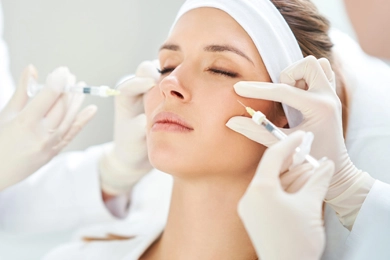 Unlocking the Secrets of Botox: A Comprehensive Guide
Unlocking the Secrets of Botox: A Comprehensive GuideA mainstay in the aesthetic treatment sector, Botox is a word that conjures up images of youth and beauty. Given its potent anti-aging properties and capacity to smooth wrinkles, it is understandable why mil ...
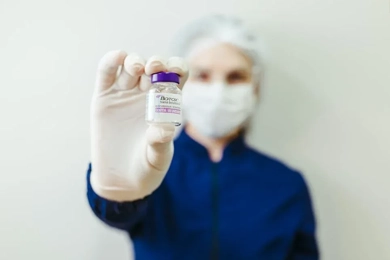 Botox: The Magic Medicine for Everything
Botox: The Magic Medicine for EverythingBotox, or Botulinum toxin as it is known scientifically, has long been associated with aesthetic surgeries meant to minimize wrinkles and fine lines. ...
 12 Unexpected Botox Benefits You Won't Believe
12 Unexpected Botox Benefits You Won't BelieveBotox, a word frequently associated with the realm of cosmetic beauty, conceals a slew of unexpected benefits beneath its surface that go beyond its conventional use. ...
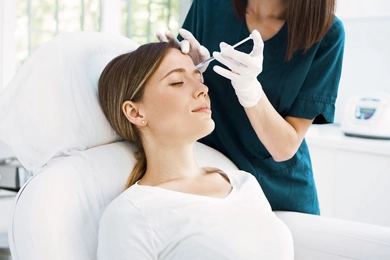 A Beginner's Guide to Botox: What to Expect and How to Prepare
A Beginner's Guide to Botox: What to Expect and How to PrepareThis comprehensive guide will outline the following: considerations to bear in mind, anticipations during and following a Botox treatment, and pre-treatment precautions. ...
 Botox Didn't Work; What Is the Reason for This? What Should I Do?
Botox Didn't Work; What Is the Reason for This? What Should I Do?Botox adverse effects may be attributed to a multitude of factors, including the practitioner's skill, the product's quality, or the physical attributes of the recipient. ...
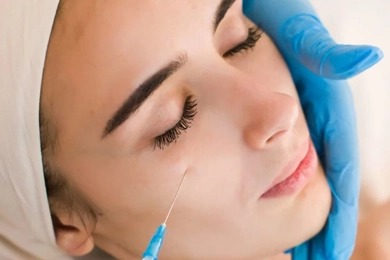 3 Zone Botox
3 Zone BotoxBotox continues to lead non-surgical aesthetic therapies in the large and ever-evolving field of cosmetic treatments. While the fundamentals of Botox are generally understood by most individuals, the idea of ...
 When Does the Effect of Botox Begin and How Long Does It Last?
When Does the Effect of Botox Begin and How Long Does It Last?Botox has grown to be one of the most popular cosmetic procedures in the globe due to its effectiveness in smoothing out wrinkles and fine lines. Potential patients frequently inquire about the beginning and ...
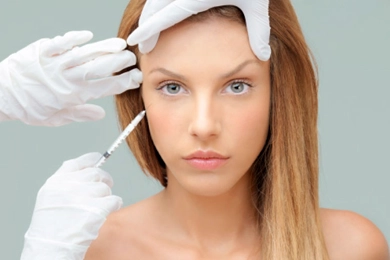 Does Resistance Develop to Botox?
Does Resistance Develop to Botox?Botox, a common non-surgical cosmetic procedure, has changed everything for many people who want to get rid of wrinkles and fine lines. Although the effects are frequently successful, some individuals report ...
 Post-Botox Care: The Do's and Don'ts for Optimal Results
Post-Botox Care: The Do's and Don'ts for Optimal ResultsWith millions of procedures conducted each year, Botox has solidified its position as a top non-surgical aesthetic treatment. Many people appreciate it due to its capacity to lessen wrinkles and give a more ...
 How Frequently Should I Get Botox?
How Frequently Should I Get Botox?Botox has become a buzzword in the aesthetic industry, renowned for its ability to smooth wrinkles and rejuvenate the complexion. However, a common conundrum that many encounter is determining the optimal fr ...
 Preventative Botox
Preventative BotoxPreventative Botox stands out as a bright prospect for many in a time when the quest for perpetual youth has gained considerable traction. This cutting-edge technique is becoming more and more well-liked as ...
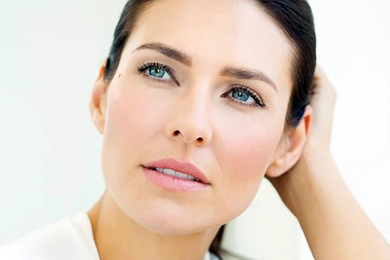 Botox vs. Filler
Botox vs. FillerBotox and dermal fillers stand out as two of the most popular and successful procedures in the cosmetic business for restoring a young appearance. ...
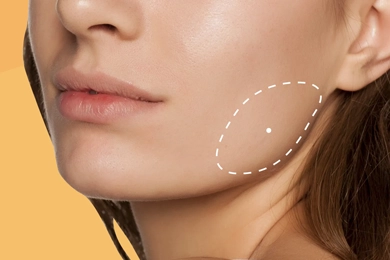 A Comprehensive Look at Botulinum Toxin
A Comprehensive Look at Botulinum ToxinBruxism is the medical term for teeth grinding or clenching, a common condition that many people experience at some point in their lives. ...
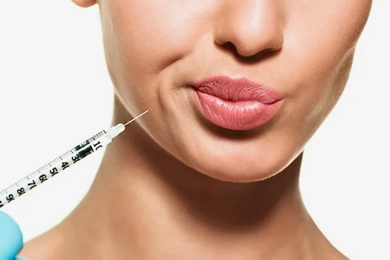 Can The Effects of Botox Be Undone?
Can The Effects of Botox Be Undone?The neurotoxin known as Botox, also known as botulinum toxin type A, has become extremely popular in cosmetic dermatology due to its capacity to minimize the appearance of fine lines and wrinkles. ...
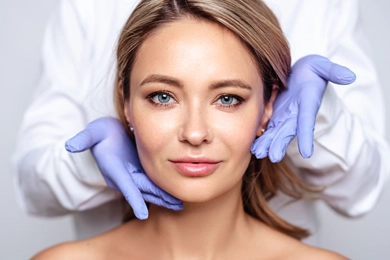 I Have Had Botox Done, But I Am Not Satisfied
I Have Had Botox Done, But I Am Not SatisfiedThe outcomes of Botox, however, can vary from person to person as with any medical procedure, and occasionally, patients may not be entirely satisfied with the results. Here is what you should do if you find ...
 How Long Does Botox Take To Work, Timeline And More
How Long Does Botox Take To Work, Timeline And MoreBotox is a well-known cosmetic procedure that helps to hide facial wrinkles and fine lines. Yet when considering Botox, one of the most frequently asked queries is how long it takes to start working. We will ...
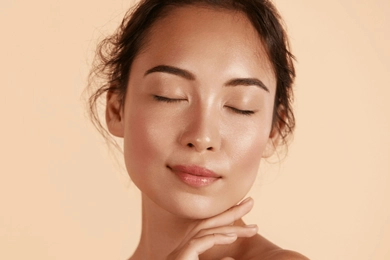 How Long Does Botox Last?
How Long Does Botox Last?A common cosmetic procedure that aims to lessen the appearance of wrinkles and fine lines is botox. It is frequently applied on frown lines, crow's feet, and forehead lines. But one concern that many people ...
 How to Make Botox Last Longer
How to Make Botox Last LongerHow to Make Botox Last Longer It functions by preventing the signals that tell muscles to contract, which helps the skin become smoother. While Botox's effects are transient, there are strategies to extend i ...
 Botox Aftercare: Things you Should Avoid After Botox Treatment
Botox Aftercare: Things you Should Avoid After Botox TreatmentWhile Botox is a relatively safe procedure, it is important to follow proper aftercare instructions to ensure the best results. In this blog post, we will discuss things you should avoid after Botox treatmen ...
 What Happens If I Stop Getting Botox Injections?
What Happens If I Stop Getting Botox Injections?For many years, people have used Botox, a common cosmetic procedure, to lessen the appearance of wrinkles and fine lines. It functions by obstructing the signals that travel from the nerves to the muscles, w ...
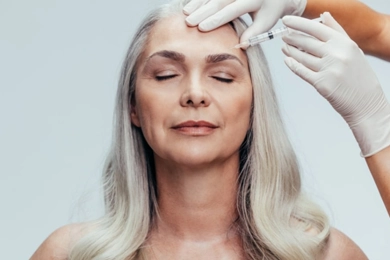 Can I Exercise After Botox?
Can I Exercise After Botox?In this article, we will examine the effects of exercise on Botox and offer some guidelines for exercising safely after receiving the popular cosmetic procedure. ...
 When Will You See Results After Masseter Botox?
When Will You See Results After Masseter Botox?There are several therapy options for bruxism, or the unintentional grinding or clenching of teeth. Injections of masseter Botox are one of the most well-liked and successful therapies. ...